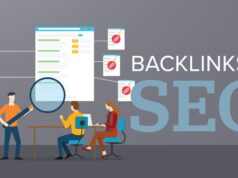
Page Contents
What is Technical Debt in software development?

You cannot successfully continue to build upon a faulty foundation. Software is no different. However, in software many times we never analyze for technical debt and thus fail to remove it as the foundation becomes more and more weakened with each new feature built on top of it.
To the extent that technical debt is about processed choices, careful planning, and good design we should automatically know how to avoid it. And indeed if we are disciplined enough then we might be able to avoid it. However technical debt is more about mental constructs and mundane experience that actually drives how well we’re able to implement our creative vision.
To a certain extent, the problem with it is that too much of it results in too much stress, complicates our decision-making, makes us anxious leaving no room for more writing and checking.
There are two types

Deliberate refers to things that were the author’s original intention but weren’t implemented as well as they could have been. For example, a bug that wasn’t caught before release is deliberate technical debt.
On the other hand, sometimes programmers inadvertently create it when they fail to do something obvious like documenting their code. The intentional type comes up when you’re making changes to your program and the changes aren’t completely integrated. The accidental type happens when you build something and then realize later that you should have done another thing with it.
Why should we be concerned about technical debt?

Technical debt in software is a growing problem. In fact, as recently as 2012, 40 percent of organizations said they faced some level of it. it can be so severe it threatens the very foundations of your organization.
And while there are plenty of solutions out there for managing technical debt, these solutions are often uncomfortable or expensive for new startups and small businesses. Technical debt can seriously affect productivity and profitability.
Our ability to complete software projects is directly related to our ability to identify risks and resolve them in a timely manner. As more companies rely on software for core business operations, it will become an increasing problem. As an engineer on a software project, you are exposed to many of these risks and responsibilities.
How does it affect our product?

As the cost of software systems grows, the potential for technical debt to threaten business viability increases. Long-term can result in reduced productivity and revenue, impaired customer relations, and poor reputation among current and potential users. Technology solutions for today’s problems often fail to address the needs of tomorrow’s users, even as they temporarily solve current problems.
Future-proofing software systems must incorporate security features that can detect and adapt to changes in the way customers use the software. If users install new software or update existing applications frequently, there is a risk that financial incentives will be sacrificed for short-term technical convenience.
How to Measure?

As a developer, you should strive to minimize technical debt in your software projects and focus instead on integrating new features value-for-money. When used effectively, technical debt can help develop a stronger relationship between your users and your software product. It can also enable you to work faster and more effectively with other developers to build out advanced.
How to Identify?

It may seem like it doesn’t matter much, but it’s actually a major drain on your focus, energy, and motivation. If this gets bigger than you can handle, it could ultimately kill your ability to finish what you started. Technical debt can appear as changes to code, broken functionality, or unplanned complexity. If this seems like it’s getting worse rather than better, it probably means there’s more technical debt out there than you realize. So what can you do about it?
Three ways to deal with it

To battle technical debt, we must first recognize that it’s is not an abstract problem to solve, but a concrete problem with an effective solution. We need a change in our culture and from top-down to bottom in the software industry.
Our job is to take control of our careers and engineering teams and enforce great management practices so that when we add debt on top of what we’ve already got we are forced to cut off the problems before they become structural.
We must organize our daily standups in such a way that every task gets assigned a meaningful milestone and our team gets permission from management to spend one hour on a task that has zero chance of hitting that milestone.
Start getting the word out about your products and services by promoting your latest release on popular social media networks like Twitter, Facebook, and Google Plus. Someone as Webspaceteam provides the most effective solution for entrepreneurs who are looking to get their products noticed by creating an amazing viral product. Find out more at https://webspaceteam.com/.































